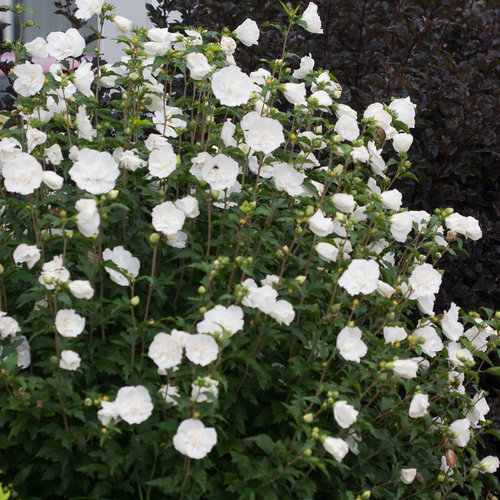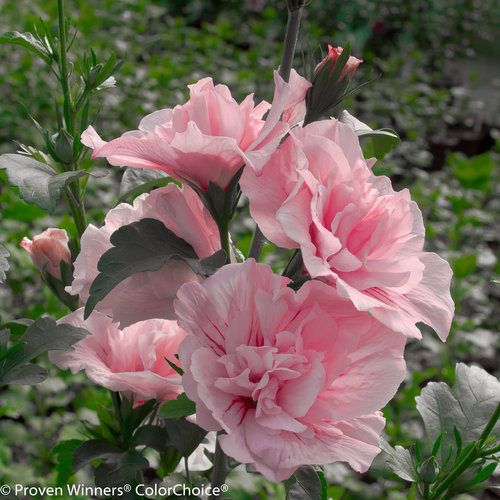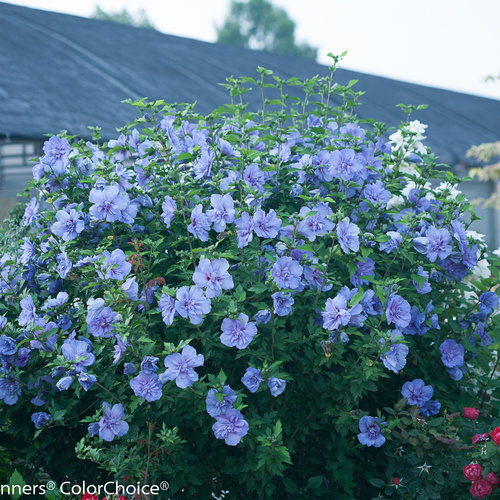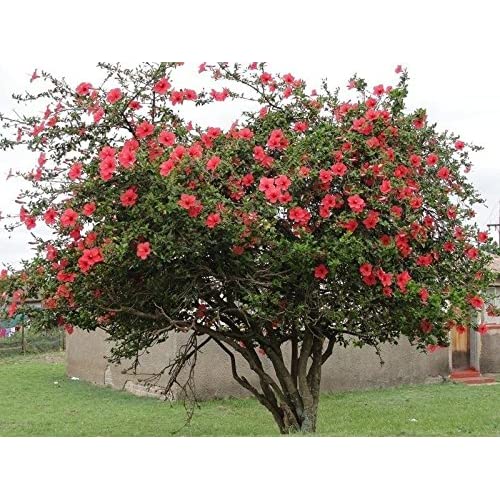The Rose Of Sharon Shrub: A Beautiful And Easytogrow Addition To Your Garden
The rose of Sharon shrub is a beautiful and easy-to-grow addition to any garden. It is native to Asia, but it has been cultivated in North America for centuries. Rose of Sharon shrubs are known for their large, showy flowers that bloom in a wide range of colors, including white, pink, red, purple, and blue. They are also known for their long bloom period, which can last from midsummer to fall.
Rose of Sharon shrubs are relatively low-maintenance plants. They are drought-tolerant and can thrive in a variety of soil conditions. They are also tolerant of heat and humidity. Rose of Sharon shrubs can grow to be quite large, so it is important to choose a planting site that gives them enough room to spread. They can also be pruned to keep them in a smaller size.
Rose of Sharon shrubs are a great choice for a variety of landscape settings. They can be used as focal points in flower beds, as hedges, or as foundation plantings. They are also attractive when planted in containers.
In addition to their beauty, rose of Sharon shrubs also have some practical uses. The leaves of the plant can be used to make a tea that is said to have diuretic, expectorant, and stomachic properties. The flowers can also be used to make a dye.
If you are looking for a beautiful and easy-to-grow shrub for your garden, the rose of Sharon is a great option. It is a versatile plant that can be used in a variety of settings and has a number of practical uses.
Here are some additional information about rose of Sharon shrubs:
- Hardiness: Rose of Sharon shrubs are hardy in USDA zones 5-9.
- Size: Rose of Sharon shrubs can grow to be 6-12 feet tall and wide.
- Bloom time: Rose of Sharon shrubs bloom from midsummer to fall.
- Color: Rose of Sharon shrubs come in a variety of colors, including white, pink, red, purple, and blue.
- Soil: Rose of Sharon shrubs are tolerant of a variety of soil conditions, but they prefer well-drained soil.
- Sunlight: Rose of Sharon shrubs need full sun to partial shade.
- Watering: Rose of Sharon shrubs are drought-tolerant, but they will need more water during hot, dry weather.
- Pruning: Rose of Sharon shrubs can be pruned in the spring or fall. They can be pruned to shape or size, or they can be pruned back to the ground to encourage new growth.
- Propagation: Rose of Sharon shrubs can be propagated by seed, by cuttings, or by layering.
Here are some tips for growing rose of Sharon shrubs:
- Choose a planting site that gets full sun to partial shade.
- Amend the soil with compost or other organic matter before planting.
- Plant the shrub at the same depth as it was growing in the nursery pot.
- Water the shrub well after planting.
- Water the shrub regularly during the first year after planting.
- Fertilize the shrub in the spring and fall with a balanced fertilizer.
- Prune the shrub in the spring or fall to shape or size.
- Protect the shrub from cold weather in winter if you live in a cold climate.
With proper care, rose of Sharon shrubs can provide years of beautiful blooms and enjoyment.
Rose of Sharon shrubs are a beautiful and versatile addition to any garden. They are hardy in USDA zones 5-9, and can tolerate a wide range of conditions, including poor soil, heat, humidity, drought, and air pollution. Rose of Sharon shrubs bloom from midsummer to fall, and come in a wide variety of colors, including white, red, pink, lavender, blue, and bicolors. They are also relatively easy to care for, requiring only occasional pruning and watering.
If you are interested in learning more about rose of Sharon shrubs, I recommend visiting Garden Wiki. This website has a wealth of information on the topic, including plant profiles, care tips, and even a forum where you can ask questions and get advice from other gardeners.
FAQ of rose of sharon shrub
Question 1: How much sun does rose of Sharon need?
Rose of Sharon shrubs need full sun to partial shade. They will not flower as well in full shade, and they may be more susceptible to pests and diseases. If you live in a hot climate, you may want to plant your rose of Sharon in a spot that gets some afternoon shade.
Question 2: How often should I water my rose of Sharon?
Rose of Sharon shrubs need regular watering, especially during the hot summer months. Water your shrub deeply once a week, or more often if the weather is hot and dry. Be sure to water the soil at the base of the shrub, and avoid getting the leaves wet.
Question 3: How do I fertilize my rose of Sharon?
Rose of Sharon shrubs benefit from a light application of fertilizer in the spring and summer. Use a balanced fertilizer, such as 10-10-10, and follow the directions on the label. You can also fertilize your shrub with compost or manure.
Question 4: How do I prune my rose of Sharon?
Rose of Sharon shrubs can be pruned in the spring or fall. If you want to keep your shrub compact, you can prune it back by one-third to one-half. If you want to encourage more flowers, you can prune off the spent blooms.
Question 5: Why aren't my rose of Sharon shrubs blooming?
There are a few reasons why your rose of Sharon shrubs might not be blooming. One possibility is that they are not getting enough sun. Another possibility is that they are not getting enough water. Finally, they may not be getting enough fertilizer. If you have checked all of these factors and your shrubs are still not blooming, you may want to consult with a gardening expert.
Image of rose of sharon shrub
- A white rose of Sharon shrub in full bloom. The flowers are large and trumpet-shaped, with a delicate white color. The shrub is healthy and green, with a lush appearance.

- A pink rose of Sharon shrub in full bloom. The flowers are smaller than the white flowers, but they are just as beautiful. The color is a deep pink, with a hint of purple. The shrub is also healthy and green.

- A blue rose of Sharon shrub in full bloom. The flowers are a vibrant blue color, with a slightly darker blue center. The shrub is tall and upright, with a cascading appearance.

- A red rose of Sharon shrub in full bloom. The flowers are a deep red color, with a slightly lighter red center. The shrub is small and compact, with a rounded appearance.

- A variegated rose of Sharon shrub in full bloom. The leaves of the shrub are a mix of green and white, with some leaves having a pink or red tint. The flowers are a light pink color, with a darker pink center.

Post a Comment for "The Rose Of Sharon Shrub: A Beautiful And Easytogrow Addition To Your Garden"